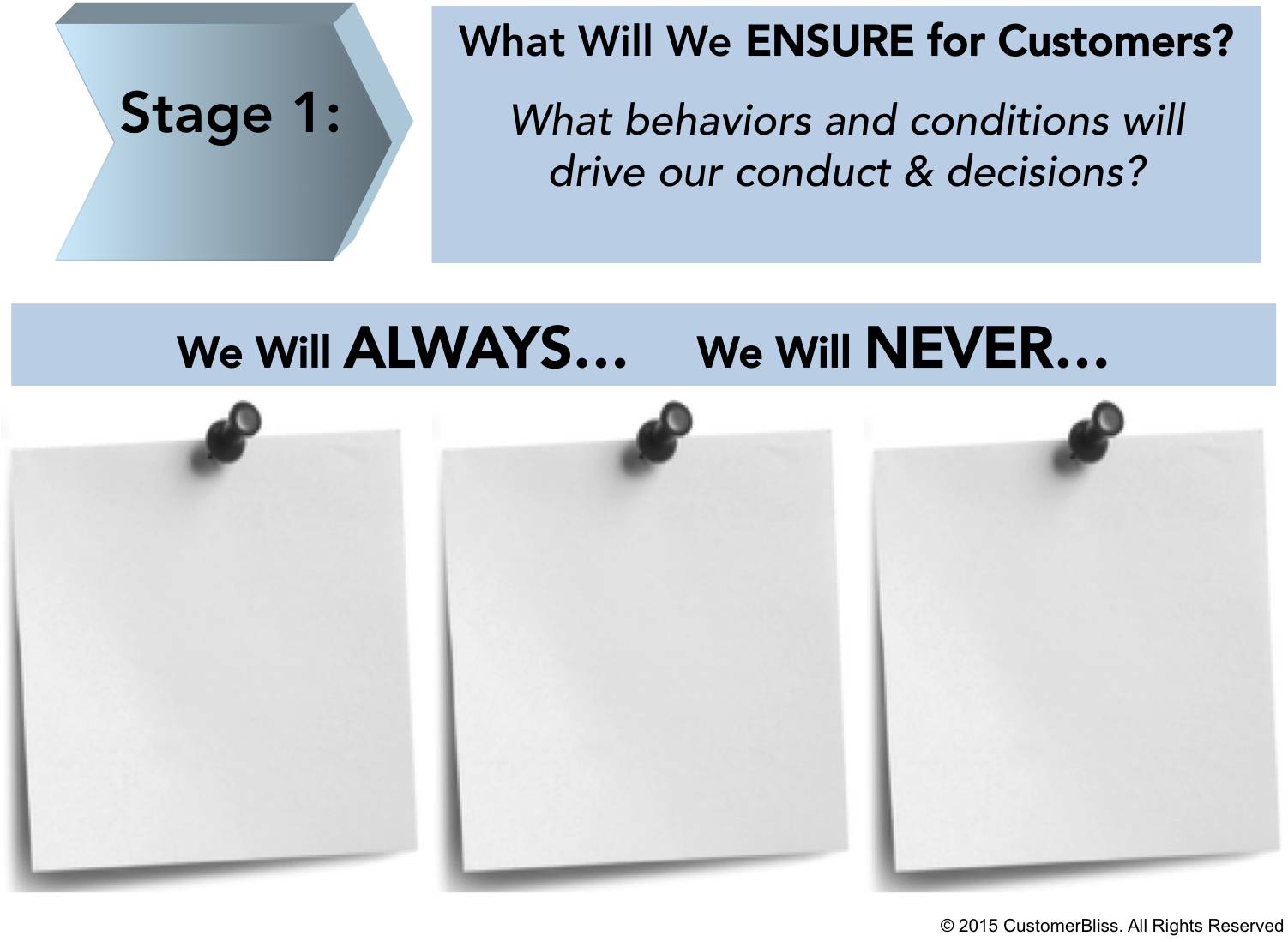Customer Culture
Not too long ago, I spoke with Jeanne Bliss about the 7 Inhibitors to Customer Driven Growth. Jeanne’s new book Chief Customer Officer 2.0: How to Build Your Customer-Driven Growth Engine is a success roadmap for leaders wanting to build a customer-focused organization.
Jeanne also answered my questions about how to establish a customer culture, social media strategy, leadership, earning the right to grow, and establishing a sense of urgency:
Establishing a Customer Centric Culture
“Culture is the action, not the words.” How do you connect corporate aspirations with employees’ actions?
For customer-driven work to be transformative and stick, it must be more than a customer manifesto. Commitment to customer-driven growth is proven with action and choices. To engender this culture, people need examples. They need proof.
Customer culture is talked about by many leaders but misunderstood by most organizations. “Commitment” to customers must be attached to deliberate operational behavior, such as, “We will go to market only after these 12 customer requirements are met” or “Every launch must meet these five conditions, which the field requires for success. We won’t launch without them, no exceptions.” People inside organizations need to see the commitment translated to actions that they will feel proud to follow and emulate.
Moving well past words, a deliberate and united set of leadership actions and behaviors practiced in unison is required.
One of the first activities we often undertake to unite leaders is to employ the journey framework to build an operational “code of conduct.”
Leaders are encouraged to think through tactically, by stage of the experience, what the company must always do for customers to honor them and earn the right to growth. Also, by stage of the experience, what should the company never do to customers to dishonor them or their time? After this initial effort is worked through with customers and employees, it gives the organization clarity about how to make decisions. It is a powerful first step in embedding the customer journey to inform and enable decision-making.
Most leadership teams don’t invest deep thinking in answering these questions. As a result, decisions are driven by silo objectives and inside-out goals and metrics. Without a conversation uniting leaders in what I call their code of conduct for how they will and will not grow, employees don’t have a clear roadmap for how they should steer their decisions. Most important, the decision lens for making decisions varies by leader. This creates confusion, and that confusion results in the random and inconsistent treatment customers receive.
Social Media Influence on Strategy
How has social media influenced corporate strategy?
Social media has given customers enormous power and a megaphone to speak out about their experiences. I am supremely enthused about this forcing function! Lagging survey metrics can’t catch surges of happiness and unhappiness that customers express in social media to make an impact on customer growth and profitability.
When you deliver a reliable experience, you earn the right to your customers’ story through word of mouth. And your customers will come back because they want to have that experience again. There are three repeated points that customers talk about through social media, which will earn you the right to new customer growth without the acquisition cost and organic growth of your existing customers. These are:
- Was the experience consistent and reliable, no matter where or who the customer talked to in any channel?
- Does their relationship with you improve their life or business? Did your actions prove your commitment to them?
- How does it feel for the customer to do business with you? Honored, distrusted, ignored? All of these come out in tweets, reviews, and message boards.
What we know is that the power of social listening—either in person or online—has an increasingly high impact on purchase decisions. In both business-to-business and business-to-consumer organizations, customers yield to the reviews and feedback of others who have experienced your business to drive nearly 80 percent of their buying decisions. Your promises and messaging account for about 20 percent of what customers and clients consider when they are making a buying decision.
When your experience is unreliable, the most powerful way to grow—positive word of mouth—will suffer. If the experience you deliver to customers is not consistent and reliable no matter what channel or silo or location they interact with, then customers won’t vouch for you. That will impact recommendations and organic growth.
If your customer can’t tell another customer what they get from you, how they get it, how it improves their life, and consistently how you make them feel as a result, then you don’t earn their recommendation. You don’t own the moment, and at any time they may go shopping for a competitor that’s more reliable. More important, the lack of reliability will send them away.
Earn the Right to Grow
Would you share more about your recommendation to replace the word loyalty with desire? You say companies need to “Earn the right to grow.”
I’m introducing a new word for customer experience professionals, marketers and leaders to consider, and that is to replace the word “loyalty” with the word “desire.” That is because what I’ve experienced and observed is that “loyalty” can be considered something to go get from customers, rather than something to be earned.
Loyalty efforts can become misguided when it’s established that customers who buy two products or services are more loyal to a brand or company than those who have one. This drives behavior to try to get more loyalty by pitching the client to buy that second product or sign up for that second service. Instead of earning the right to growth by delivering reliable and valuable experience, customer loyalty efforts focus on math and actions to get customers to buy more. The focus goes to campaigns focused on upselling and cross-selling to customers.
But you can’t earn loyalty without doing the hard work to deliver a reliable experience. That is why I use the phrase “earn the right to grow.” If you deliver a reliable experience, your customers and clients will desire to have it again. Desire is an emotion that will earn growth and prosperity for your business.
Establishing Urgency
In the absence of a crisis, how do you create the necessary urgency around these efforts?
 In nearly every business we work with, one of the most powerful actions we take with leaders is to engage with them to do “customer math.” We engage the Chief Marketing Officer, the Chief Financial Officer and the Chief Executive Officer to unite to establish with us a simple measuring of the growth or loss of their customer asset. For example, how many new customers did they bring in during the current month, quarter or year, in both volume and value? They must use whole numbers to know and think about human lives walking in their door. That measures the power of their acquisition engine. But then they must also measure in whole numbers the volume and value of customers who left the business. That is an indication of the outcome of the experience delivered across the entire enterprise. Then the math begins, as we then subtract lost customers from new customers to arrive at a one-company interpretation of net customer asset growth or loss.
In nearly every business we work with, one of the most powerful actions we take with leaders is to engage with them to do “customer math.” We engage the Chief Marketing Officer, the Chief Financial Officer and the Chief Executive Officer to unite to establish with us a simple measuring of the growth or loss of their customer asset. For example, how many new customers did they bring in during the current month, quarter or year, in both volume and value? They must use whole numbers to know and think about human lives walking in their door. That measures the power of their acquisition engine. But then they must also measure in whole numbers the volume and value of customers who left the business. That is an indication of the outcome of the experience delivered across the entire enterprise. Then the math begins, as we then subtract lost customers from new customers to arrive at a one-company interpretation of net customer asset growth or loss.
Most leadership teams have this information reported in many places, sometimes with data rolled up only by silo, and not aggregated to know and care about the shift in the growth or loss of the customer asset. And most companies talk about this as a retention rate or “churn.”
When we do this math, we can show the incremental growth that would have occurred if the company kept more customers. And by using whole numbers, we get leaders to take it personally that people are walking away from the company.
And THAT gets the action moving. The simplicity and clarity establishes the connection between improving customers’ lives and earning the right to growth.
Would you share an example of a company that is really getting this right?
In my new book, Chief Customer Officer 2.0: How to Build Your Customer-Driven Growth Engine, leaders around the world tell their stories about how they are “pushing the customer rock up the hill.” We often describe the work this way, as it is a large undertaking to unite leaders and the silos of a company to shift to customer-driven growth.
Here are few of the efforts these leaders are taking inside their organization. We celebrate their work in 40 stories like this in the book, in sections entitled “My Rock, My Story.”
- The Smithsonian Institute has just established their first-ever journey map to deliberately build out the experience for the over 30 million visitors they welcome each year. This has prompted a whole host of activities, starting with the welcome experience as you enter the main rotunda of the entrance for The Smithsonian.
- Adobe requires their leaders to go through a “customer immersion experience” each year where they have to step through the activities that customers must accomplish to be their customer- and they attach that activity requirement to compensation!
- Ontario Canada’s Enersource Corporation has established a culture effort entitled “Would You Treat Your Mother This Way?” to encourage their utility workers in the field to think twice before putting a utility pole in someone’s yard, and to own the entire customer experience.


